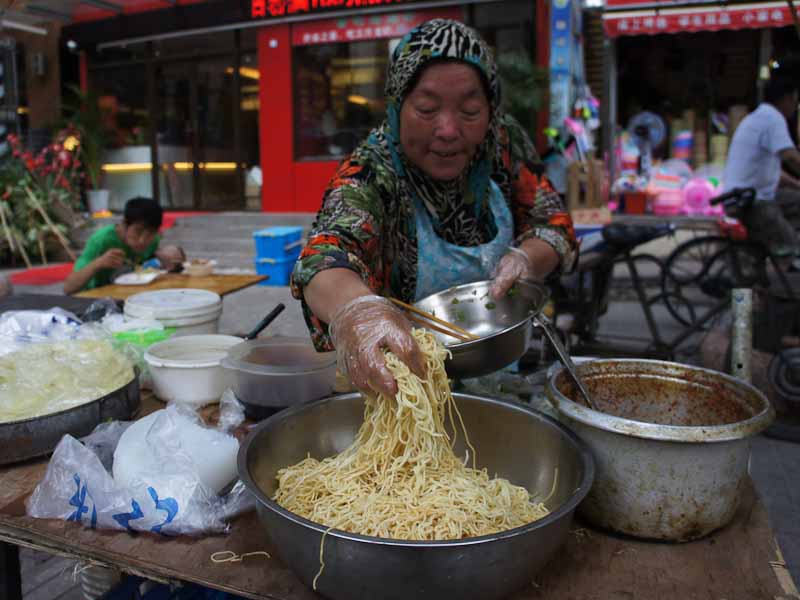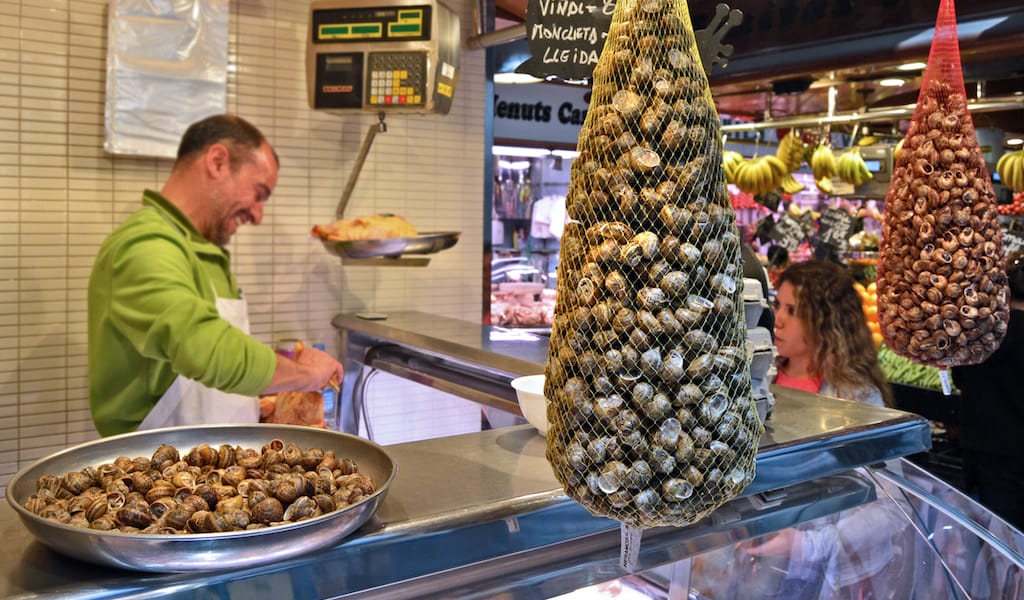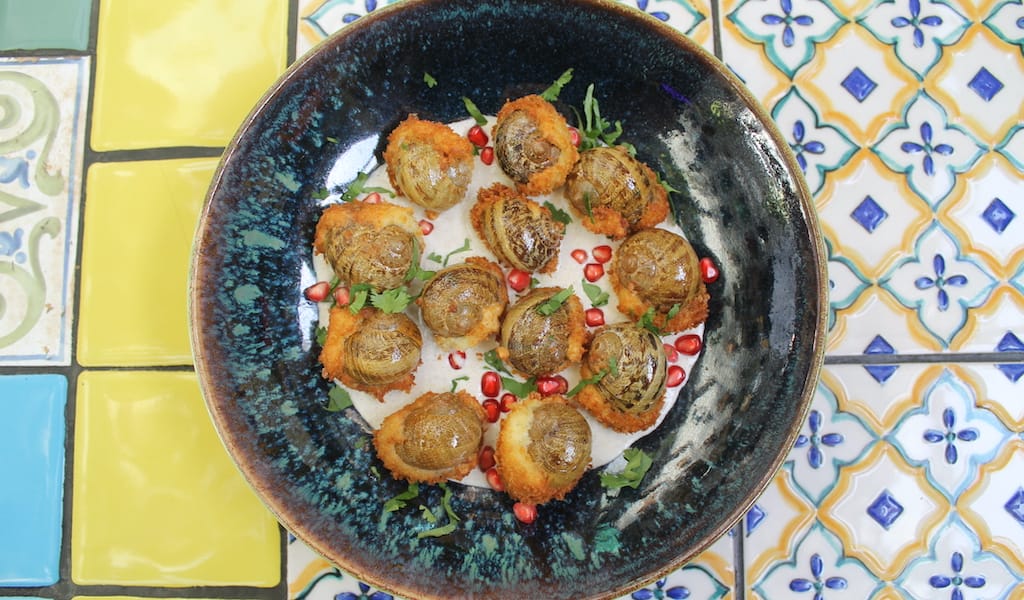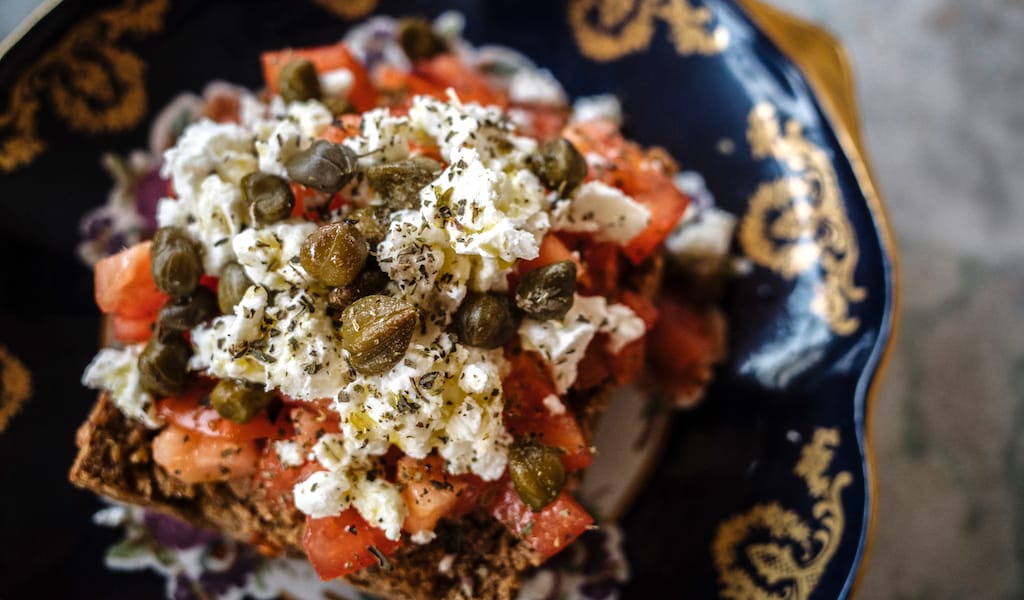Food lovers mourned the loss of Shanghai’s Muslim market when it packed up its stalls back in May, but the closure wasn’t too unexpected. Street food is always in a state of flux in Shanghai, and add to that the ethnic tensions that have developed between the Chinese majority Han and the Muslim minorities that butchered whole lambs outside Putuo’s Huxi Mosque each Friday, and it seemed like a matter of time before the weekly event was closed. The government ostensibly blamed neighbor complaints (the bazaar seemed to have outgrown the sidewalks, interfering with traffic and sending smoke from the grills into the residential areas), and vendors were abruptly told to pack up.
Less than two months later, it appears a makeshift solution has been reached. Out the back gate of the mosque, a smaller number of vendors now congregate on the slightly quieter Aomen Lu. For now, with fewer locals aware of the market’s reopening, it’s a good time to visit without the scrum of crowds, beggars and car horns.
The local Uighur minorities that have settled in Shanghai gather at the bazaar to share their Jumu’ah (Friday prayer) and break bread together. It’s here that you can find the most authentic tastes from the western frontiers of China, from which hail many of Shanghai’s minority populations. Of the 55 ethnic minorities in China, 10 are predomin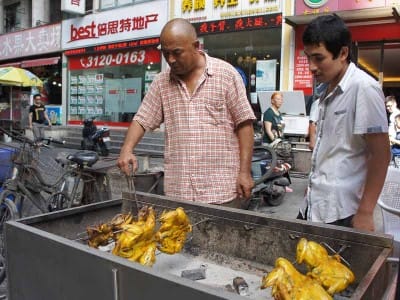 antly Muslim, constituting an estimated 1 to 2 percent of the country’s total population. For a moment, visitors to the market are transported out of Shanghai to a region where mutton replaces pork as the staple meat, and China’s diversity is on full display.
antly Muslim, constituting an estimated 1 to 2 percent of the country’s total population. For a moment, visitors to the market are transported out of Shanghai to a region where mutton replaces pork as the staple meat, and China’s diversity is on full display.
The star of market day is mutton, which is featured in almost every dish on display, from rice pilaf (抓饭, zhuāfàn) and steamed pumpkin dumplings (南瓜蒸饺, nánguā zhēng jiǎo) to juicy kebabs (羊肉串, yáng ròu chuàn) and meaty, pillowy dumplings (烤包子, kǎo bāozi), baked in a tandoor-like oven.
For noodles, try Mrs. Bai’s stall. She has been serving up liángpí (凉皮) for eight years at the market. These refreshing cold noodles made from mung beans are tossed with cucumber, cilantro, chili oil, garlic and vinegar. Like many vendors, she works in other locations the rest of the week, mainly slinging noodles for budget-conscious students around Jiaotong University. She returns to her provincial home in Zhengzhou, Henan after the close of Ramadan each year.
For another break from mutton, you’ll find Mr. Li with char-grilled rotisserie chicken (烤鸡, kǎo jī) and pigeon (烤鸽, kǎo gē). He was especially upset at the decision to close the market, as he has four kids to support, and his eldest (who is 16) is back in Kashgar (the children of China’s domestic migrants must attend woefully underfunded “migrant schools” for elementary school, but generally return to their provincial home for middle and high school). He struggles to make ends meet, and during the summer months he also sells melons 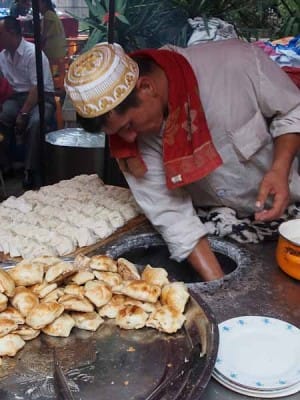 on street corners around town.
on street corners around town.
The future of this community’s main gathering spot – and major source of income – is unclear, but there is a resilience that seems to defy the actions of the overzealous chéngguǎn (城管), or urban management officers, who patrol the town looking for sidewalk eatery violations and other petty offenses.
With all of this uncertainty looming over the market, it’s a bit of a gamble what you’ll find when you go. As long as it stays open, rest assured you’ll be able to fill up on a variety of far-flung specialties. We never miss the rice pilaf; this hearty market mainstay is simmered with fatty mutton, carrot, pumpkin and onion. Grapes, watermelon and Hami melons (similar to cantaloupes) are another specialty of the hot, arid region that most of the vendors come from, and you can find fresh fruits served on sticks all summer long. Freshly squeezed pomegranate juice (石榴汁, shíliú zhī) is sometimes also available, depending on the time of year, and roving carts of raisins, dried apricots and nuts are also always on display, no matter the season.
We also love the juicy fried beef buns (煎牛肉包, jiān niúròu bāo), crisped up on all sides for a crunchy bite that offers a welcome respite from the standard pork soup dumplings and fried pork buns found around town. Many vendors sell sweet yogurt (酸奶, suānnǎi); unlike its watered-down Chinese equivalent, which is usually slurped on the go with a straw, this thick Xinjiang treat is best enjoyed with a spoon.
Whether you visit for the food or just an opportunity to experience Chinese culture beyond the Han majority, the Muslim market is a unique and satisfying slice of life to eat your way around on a Friday afternoon.
 May 12, 2021 Building Blocks
May 12, 2021 Building Blocks
For thousands of years, snails have been an easy source of protein, particularly during […] Posted in Barcelona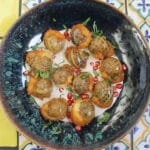 February 6, 2023 Extra Slow Food: Georgia’s Growing Snail Industry
February 6, 2023 Extra Slow Food: Georgia’s Growing Snail Industry
For a while, French-Georgian fusion restaurant Métis, which opened in 2017, seemed to be […] Posted in Tbilisi April 19, 2022 Building Blocks
April 19, 2022 Building Blocks
They grow off of walls and rocks, on rocky hills, near the sea – and even out of chinks […] Posted in Athens
Published on September 03, 2013
Related stories
May 12, 2021
BarcelonaFor thousands of years, snails have been an easy source of protein, particularly during lean times. But for the Romans, these slimy mollusks were more than just a back up – a meal of snails was considered an exquisite feast. The Romans were experts on the subject. They studied and classified snails; they knew where…
February 6, 2023
Tbilisi | By Katharine Khamhaengwong
TbilisiFor a while, French-Georgian fusion restaurant Métis, which opened in 2017, seemed to be the only place in town to get snails, served in their iconic snail khinkali. We took several trips to Akhaltsikhe and other areas of Samtskhe-Javakheti, asking for snails, and were always told the season was wrong or to look somewhere else.…
April 19, 2022
AthensThey grow off of walls and rocks, on rocky hills, near the sea – and even out of chinks in the sidewalk in the center of Athens. Tangy, floral and tart, capers are a wild crop like no other. The Acropolis Hill and most other ancient monuments in central Athens are covered with crawling caper…







































